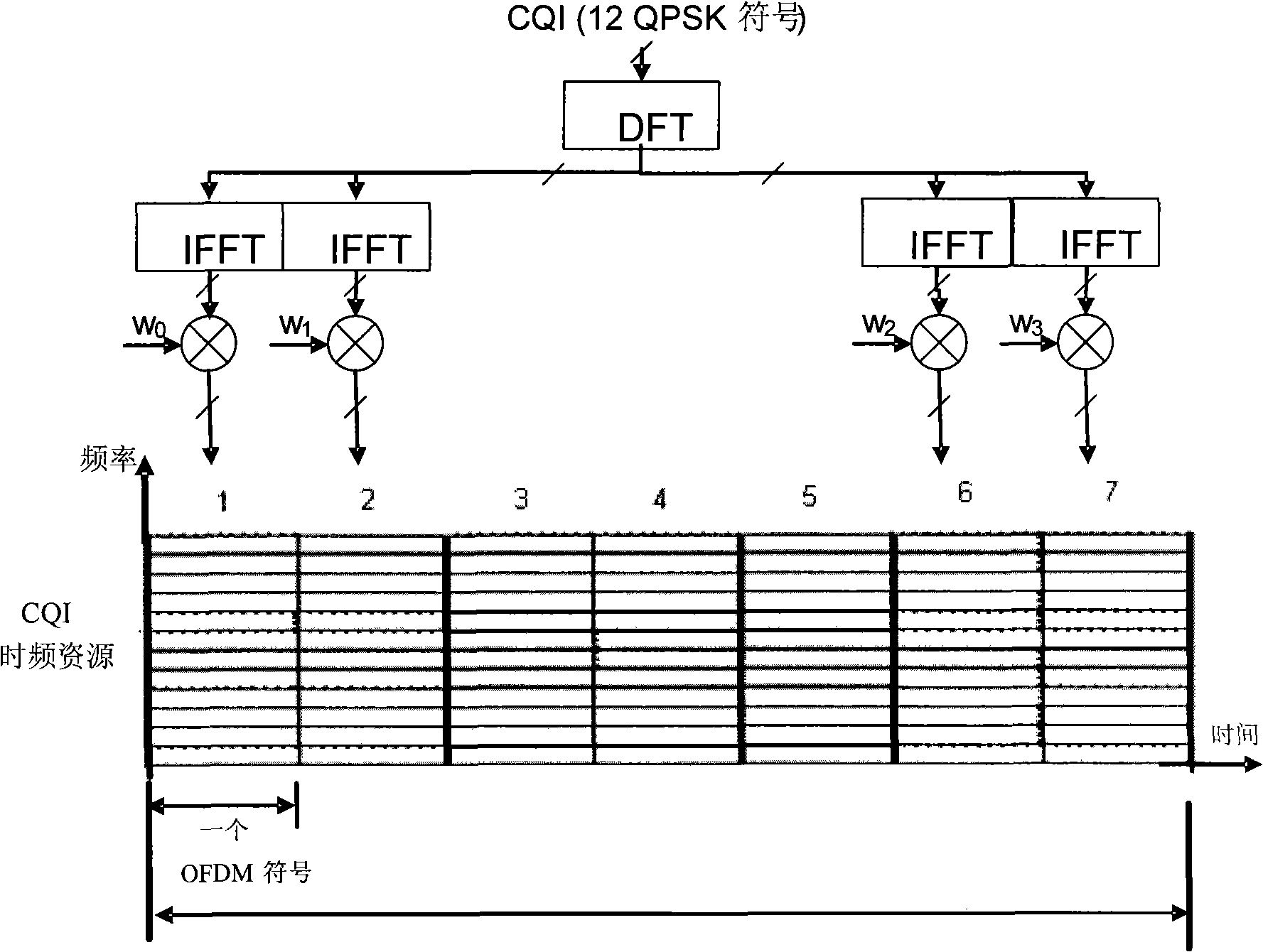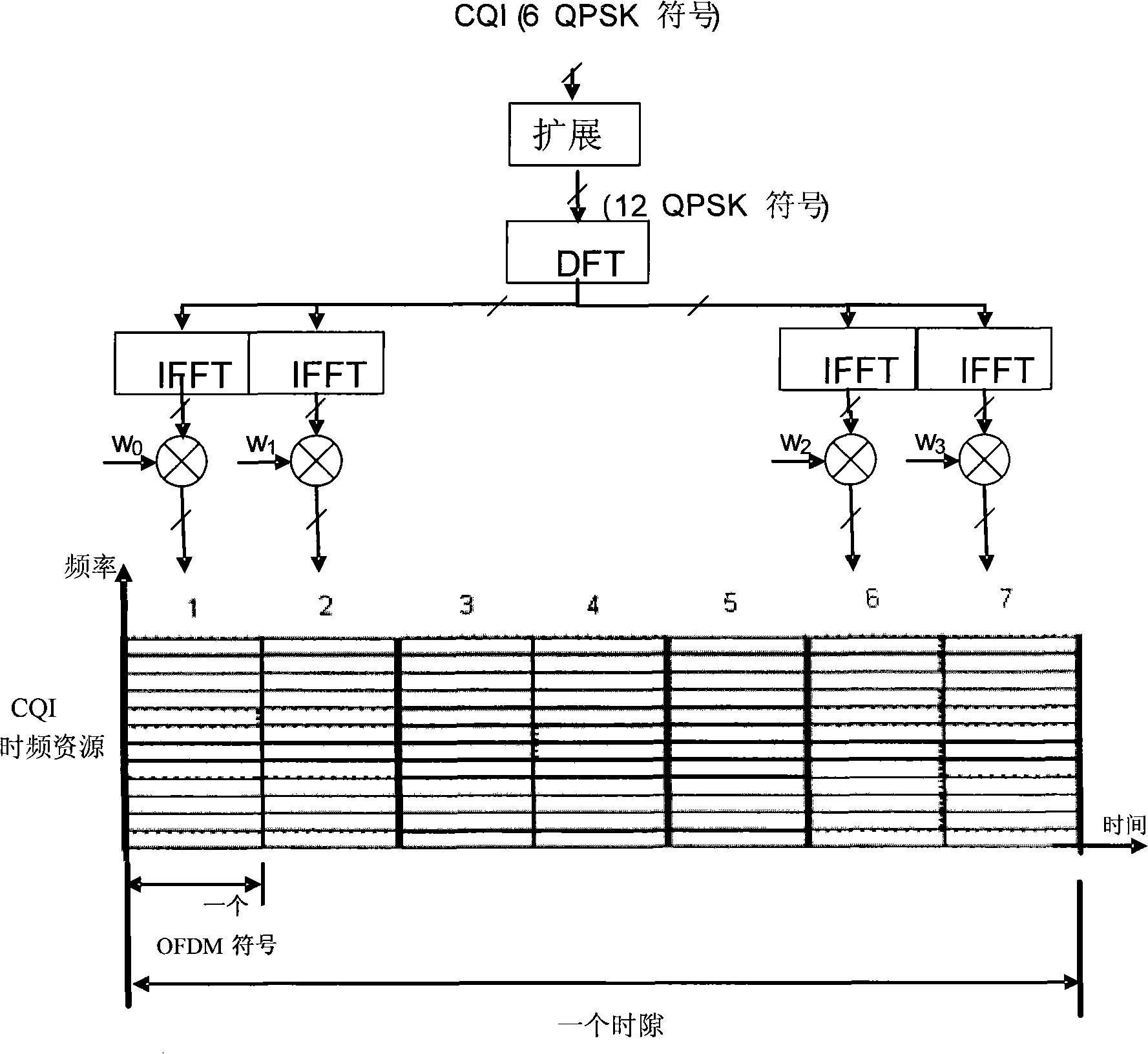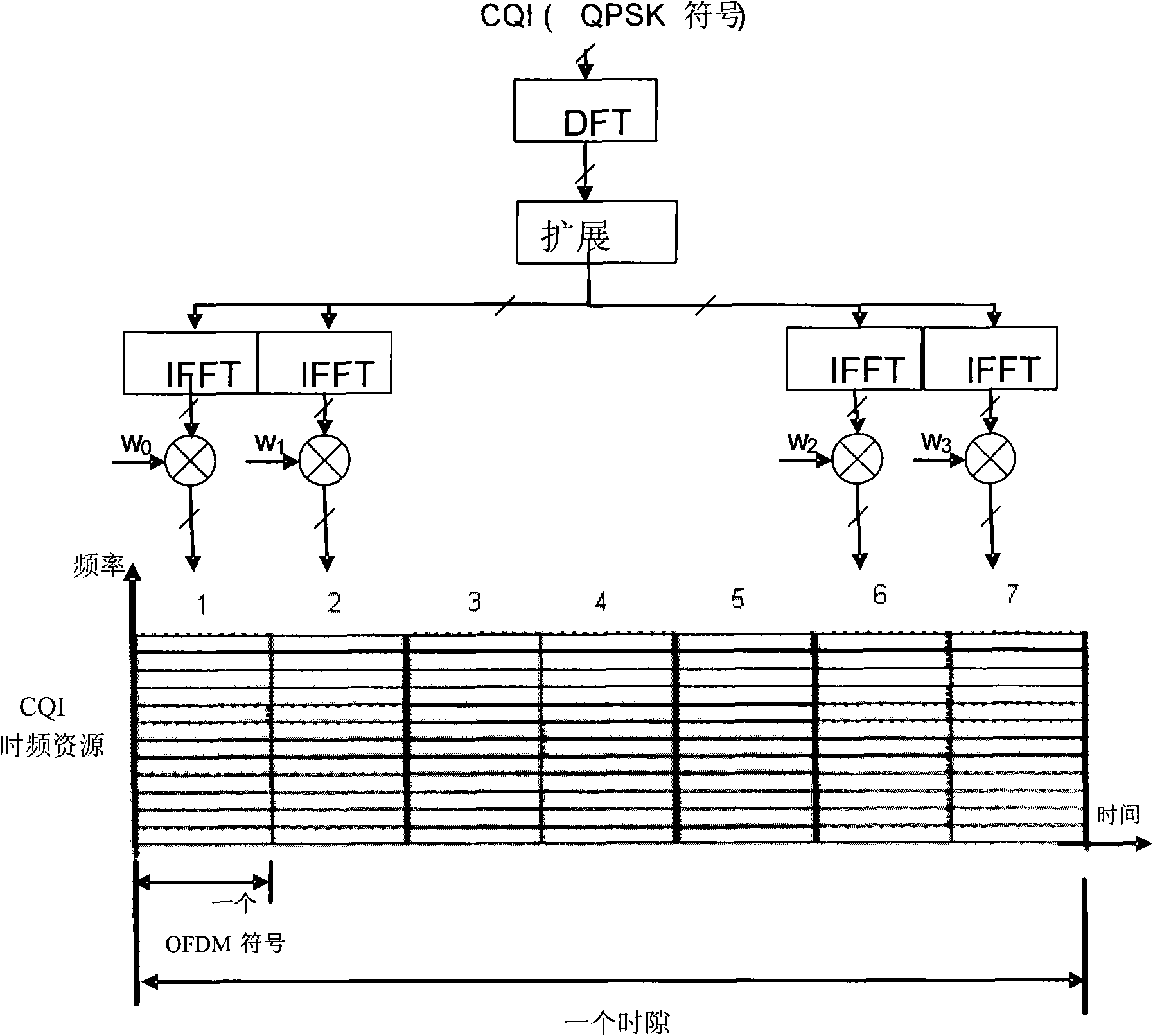Method and system for implementing channel quality indication information transmission, subscriber terminal and base station
A channel quality indication and user terminal technology, applied in the field of information transmission, can solve the problems of small number of users, unable to support more users to send CQI information at the same time, and achieve the effect of increasing the number
- Summary
- Abstract
- Description
- Claims
- Application Information
AI Technical Summary
Problems solved by technology
Method used
Image
Examples
Embodiment 1
[0038] On the data time-frequency resource, every other subcarrier constitutes a subresource. The base station informs the terminal that the terminal occupies a sub-resource of the data time-frequency resource, and specifies a Walsh code used by the terminal for sending CQI information by the terminal.
[0039] The CQI information of the terminal is modulated and coded into 6 QPSK symbols. After DFT, 6 signals are output. The terminal puts these 6 signals according to the positions specified by the base station, and inserts 0 in the other 6 positions to form 12 signals; these 12 signals After IFFT processing, a time-domain sampling signal of an OFDM symbol is obtained. The time-domain sampling signal is subjected to block expansion of Walsh codes to obtain time-domain sampling signals of 4 OFDM symbols, and the time-domain sampling signals of these 4 OFDM symbols are processed. sent to the base station.
[0040] The base station receives the CQI information of all terminals o...
Embodiment 2
[0042] On data time-frequency resources, six consecutive subcarriers form a subresource. The base station informs the terminal that the terminal occupies a sub-resource of the data time-frequency resource, and specifies a Walsh code used by the terminal for sending CQI information by the terminal.
[0043] The CQI information of the terminal is modulated and coded into 6 QPSK symbols. After DFT, 6 signals are output. The terminal puts these 6 signals according to the positions specified by the base station, and inserts 0 in the other 6 positions to form 12 signals; these 12 signals After IFFT processing, a time-domain sampling signal of an OFDM symbol is obtained. The time-domain sampling signal is subjected to block expansion of Walsh codes to obtain time-domain sampling signals of 4 OFDM symbols, and the time-domain sampling signals of these 4 OFDM symbols are processed. sent to the base station.
[0044] Embodiment one of the second scheme:
[0045] In this embodiment, th...
Embodiment 2
[0054] In this embodiment, the length N is 24, and the CQI information of the terminal is modulated and coded into a symbol with a length of 4, which needs to be extended by 6 times, and a code composed of any row elements in the 6th-order DFT transformation matrix can be used as the spreading code , the identification code adopts an orthogonal code with a length of 5.
[0055] The CQI information of the terminal is modulated into 4 QPSK symbols. After the 4 QPSK symbols are processed by DFT, 4 signals are output, and the 4 signals are spread by the spreading code to obtain 24 signals. After the 24 signals are processed by IFFT, the first time-domain sampling signal of an OFDM symbol is obtained. The first time-domain sampling signal is subjected to block expansion of the identification code to obtain a second time-domain sampling signal of 5 OFDM symbols, and the second time-domain sampling signal is processed and sent to the base station. The base station receives the CQI i...
PUM
 Login to View More
Login to View More Abstract
Description
Claims
Application Information
 Login to View More
Login to View More - R&D
- Intellectual Property
- Life Sciences
- Materials
- Tech Scout
- Unparalleled Data Quality
- Higher Quality Content
- 60% Fewer Hallucinations
Browse by: Latest US Patents, China's latest patents, Technical Efficacy Thesaurus, Application Domain, Technology Topic, Popular Technical Reports.
© 2025 PatSnap. All rights reserved.Legal|Privacy policy|Modern Slavery Act Transparency Statement|Sitemap|About US| Contact US: help@patsnap.com



